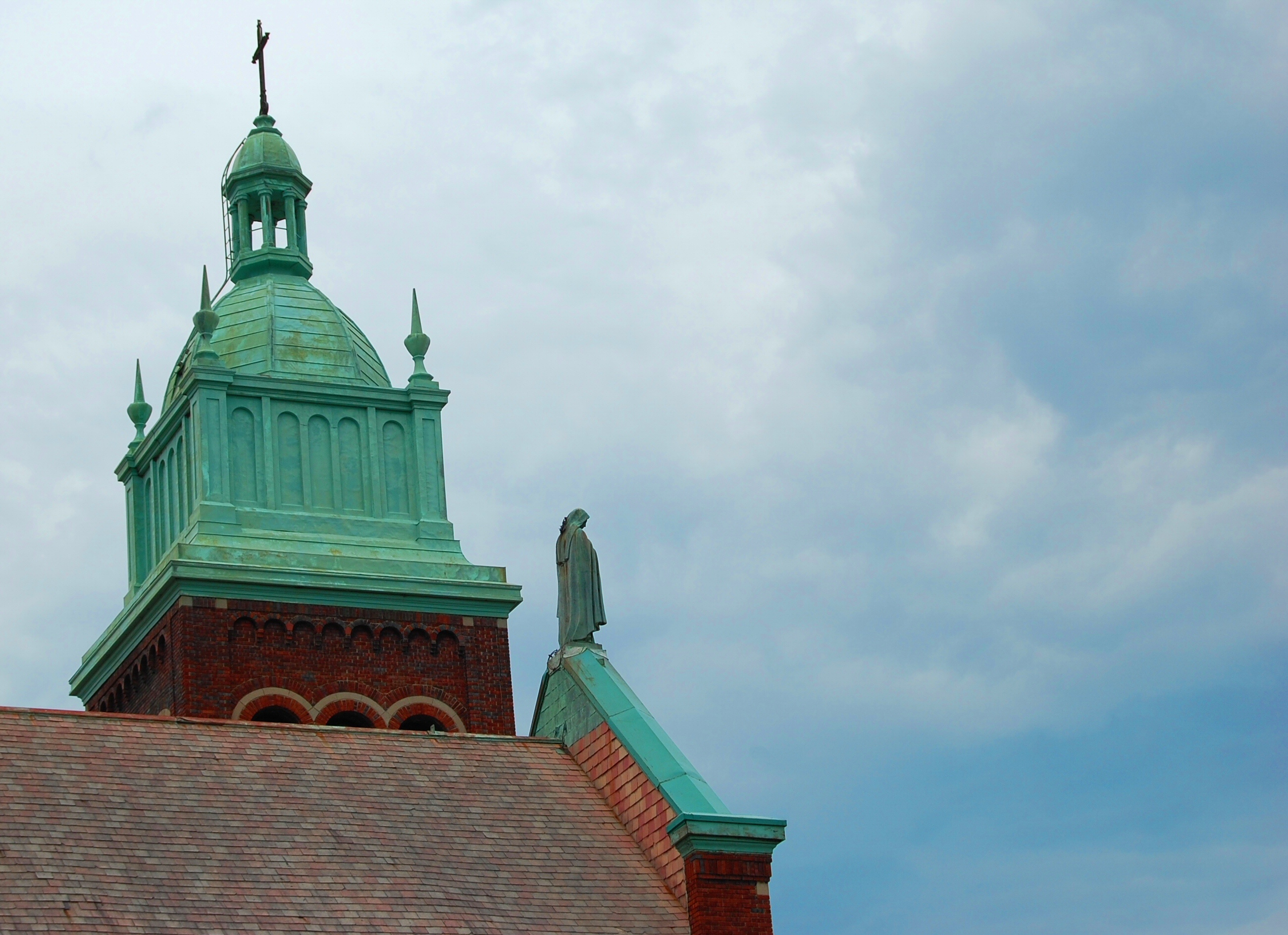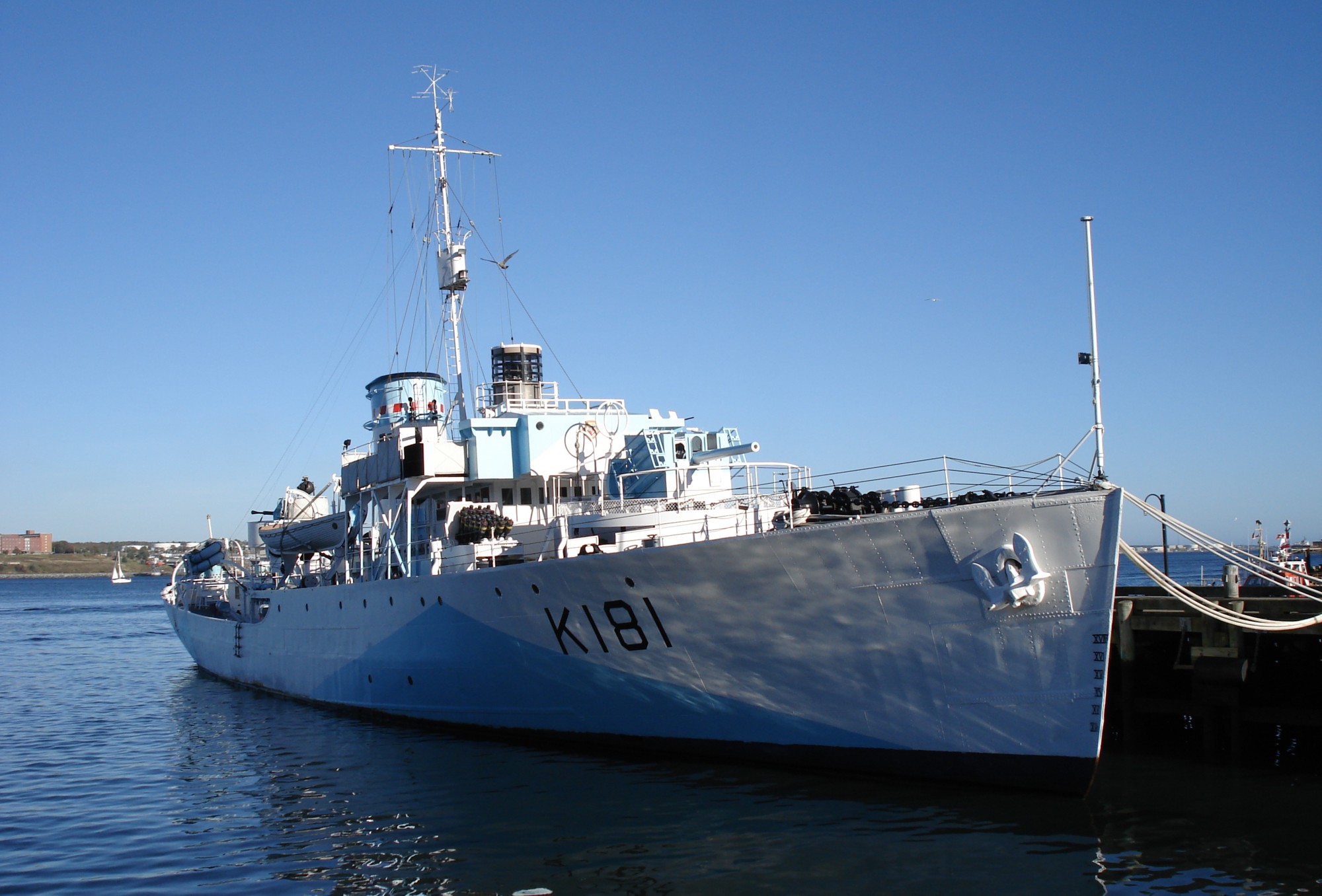|
HMCS Arvida
HMCS ''Arvida'' was a that served with the Royal Canadian Navy during the Second World War. She served primarily in the Battle of the Atlantic as a convoy escort. She was named for Arvida, Quebec. Background Flower-class corvettes like ''Arvida'' serving with the Royal Canadian Navy during the Second World War were different from earlier and more traditional sail-driven corvettes. The "corvette" designation was created by the French as a class of small warships; the Royal Navy borrowed the term for a period but discontinued its use in 1877. During the hurried preparations for war in the late 1930s, Winston Churchill reactivated the corvette class, needing a name for smaller ships used in an escort capacity, in this case based on a whaling ship design. The generic name "flower" was used to designate the class of these ships, which – in the Royal Navy – were named after flowering plants. Corvettes commissioned by the Royal Canadian Navy during the Second World War were nam ... [...More Info...] [...Related Items...] OR: [Wikipedia] [Google] [Baidu] |
Arvida, Quebec
Arvida ( ) is a settlement of 12,000 people (2010)Peritz, Ingrid, "Saguenay 'utopia' dreaming big again", ''The Globe and Mail'', 13 November 2010, p. A31 in Quebec, Canada, that is part of the City of Saguenay. Its name is derived from the name of its founder, Arthur Vining Davis, president of the Alcoa aluminum company. Arvida was founded as an industrial city by Alcoa in 1927, when the first aluminum smelter was constructed. Located north of Quebec City, south of the Saguenay River between Chicoutimi and Jonquière, the town was planned from the first day and was developed as a company town, to have a population of about 14,000 inhabitants, four Catholic parishes, and many other denominations, parishes and schools. It was known as "the City Built in 135 Days" and described by ''The New York Times'' as a "model town for working families" on "a North Canada steppe". History In 1912 James B. Duke purchased the rights to the power on the Saguenay River, and in 1925 the Isle ... [...More Info...] [...Related Items...] OR: [Wikipedia] [Google] [Baidu] |
Saint John, New Brunswick
Saint John is a seaport city of the Atlantic Ocean located on the Bay of Fundy in the province of New Brunswick, Canada. Saint John is the oldest incorporated city in Canada, established by royal charter on May 18, 1785, during the reign of King George III. The port is Canada's third-largest port by tonnage with a cargo base that includes dry and liquid bulk, break bulk, containers, and cruise. The city was the most populous in New Brunswick until the 2016 census, when it was overtaken by Moncton. It is currently the second-largest city in the province, with a population of 69,895 over an area of . French explorer Samuel de Champlain landed at Saint John Harbour on June 24, 1604 (the feast of St. John the Baptist) and is where the Saint John River gets its name although Mi'kmaq and Wolastoqiyik peoples lived in the region for thousands of years prior calling the river Wolastoq. The Saint John area was an important area for trade and defence for Acadia during the French c ... [...More Info...] [...Related Items...] OR: [Wikipedia] [Google] [Baidu] |
Ships Of The Royal Canadian Navy
A ship is a large watercraft that travels the world's oceans and other sufficiently deep waterways, carrying cargo or passengers, or in support of specialized missions, such as defense, research, and fishing. Ships are generally distinguished from boats, based on size, shape, load capacity, and purpose. Ships have supported exploration, trade, warfare, migration, colonization, and science. After the 15th century, new crops that had come from and to the Americas via the European seafarers significantly contributed to world population growth. Ship transport is responsible for the largest portion of world commerce. The word ''ship'' has meant, depending on the era and the context, either just a large vessel or specifically a ship-rigged sailing ship with three or more masts, each of which is square-rigged. As of 2016, there were more than 49,000 merchant ships, totaling almost 1.8 billion dead weight tons. Of these 28% were oil tankers, 43% were bulk carriers, a ... [...More Info...] [...Related Items...] OR: [Wikipedia] [Google] [Baidu] |
Ship Breaking
Ship-breaking (also known as ship recycling, ship demolition, ship dismantling, or ship cracking) is a type of ship disposal involving the breaking up of ships for either a source of parts Part, parts or PART may refer to: People *Armi Pärt (born 1991), Estonian handballer * Arvo Pärt (born 1935), Estonian classical composer *Brian Part (born 1962), American child actor *Dealtry Charles Part (1882–1961), sheriff (1926–1927) a ..., which can be sold for re-use, or for the extraction of raw materials, chiefly scrap. Modern ships have a lifespan of 25 to 30 years before corrosion, Fatigue (material), metal fatigue and a lack of parts render them uneconomical to operate. Ship-breaking allows the materials from the ship, especially steel, to be recycling, recycled and made into new products. This lowers the demand for mined iron ore and reduces energy use in the steelmaking process. Fixtures and other equipment on board the vessels can also be reused. While ship-breaking i ... [...More Info...] [...Related Items...] OR: [Wikipedia] [Google] [Baidu] |
Lloyd's Register
Lloyd's Register Group Limited (LR) is a technical and professional services organisation and a maritime classification society, wholly owned by the Lloyd’s Register Foundation, a UK charity dedicated to research and education in science and engineering. The organisation dates to 1760. Its stated aims are to enhance the safety of life, property, and the environment, by helping its clients (including by validation, certification, and accreditation) to improve the safety and performance of complex projects, supply chains and critical infrastructure. In July 2012, the organisation converted from an industrial and provident society to a company limited by shares, named Lloyd’s Register Group Limited, with the new Lloyd’s Register Foundation as the sole shareholder. At the same time the organisation gave to the Foundation a substantial bond and equity portfolio to assist it with its charitable purposes. It will benefit from continued funding from the group’s operating arm ... [...More Info...] [...Related Items...] OR: [Wikipedia] [Google] [Baidu] |
Paid Off
Ship commissioning is the act or ceremony of placing a ship in active service and may be regarded as a particular application of the general concepts and practices of project commissioning. The term is most commonly applied to placing a warship in active duty with its country's military forces. The ceremonies involved are often rooted in centuries-old naval tradition. Ship naming and launching endow a ship hull with her identity, but many milestones remain before she is completed and considered ready to be designated a commissioned ship. The engineering plant, weapon and electronic systems, galley, and other equipment required to transform the new hull into an operating and habitable warship are installed and tested. The prospective commanding officer, ship's officers, the petty officers, and seamen who will form the crew report for training and familiarization with their new ship. Before commissioning, the new ship undergoes sea trials to identify any deficiencies needing c ... [...More Info...] [...Related Items...] OR: [Wikipedia] [Google] [Baidu] |
Western Local Escort Force
Western Local Escort Force (WLEF) referred to the organization of anti-submarine escorts for World War II trade convoys from North American port cities to the Western Ocean Meeting Point (WOMP or WESTOMP) near Newfoundland where ships of the Mid-Ocean Escort Force (MOEF) assumed responsibility for safely delivering the convoys to the British Isles.Morison (1975) p. 319 Background On the basis of experience during World War I, the Admiralty instituted trade convoys in United Kingdom coastal waters from September 1939. Convoys gradually extended westward until HX 129 left Halifax, Nova Scotia on 27 May 1941 as the first convoy to receive escort for the entire trip from Canada. The American Neutrality Zone offered some protection in North American coastal waters until United States declaration of war in December 1941. Organization The Royal Canadian Navy organized the Halifax-based Western Local Escort Force in February 1942 as German U-boats began patrolling North American coasta ... [...More Info...] [...Related Items...] OR: [Wikipedia] [Google] [Baidu] |
Iceland
Iceland ( is, Ísland; ) is a Nordic island country in the North Atlantic Ocean and in the Arctic Ocean. Iceland is the most sparsely populated country in Europe. Iceland's capital and largest city is Reykjavík, which (along with its surrounding areas) is home to over 65% of the population. Iceland is the biggest part of the Mid-Atlantic Ridge that rises above sea level, and its central volcanic plateau is erupting almost constantly. The interior consists of a plateau characterised by sand and lava fields, mountains, and glaciers, and many glacial rivers flow to the sea through the lowlands. Iceland is warmed by the Gulf Stream and has a temperate climate, despite a high latitude just outside the Arctic Circle. Its high latitude and marine influence keep summers chilly, and most of its islands have a polar climate. According to the ancient manuscript , the settlement of Iceland began in 874 AD when the Norwegian chieftain Ingólfr Arnarson became the first ... [...More Info...] [...Related Items...] OR: [Wikipedia] [Google] [Baidu] |
Convoy SC 107
Convoy SC 107 was the 107th of the numbered series of World War II Slow Convoys of merchant ships from Sydney, Cape Breton Island to Liverpool. The ships departed New York City on 24 October 1942 and were found and engaged by a wolfpack of U-boats which sank fifteen ships.Hague 2000 p.135 It was the heaviest loss of ships from any trans-Atlantic convoy through the winter of 1942–43.Hague pp.132, 137–138, 161–162, 164, 181 The attack included one of the largest non-nuclear man-made explosions in history, when torpedoed ammunition ships SS ''Hobbema'' and SS ''Hatimura'' - both were sunk, one exploded, with the German submarine also being destroyed in the explosion. Background As western Atlantic coastal convoys brought an end to the "Second Happy Time", Admiral Karl Dönitz, the ''Befehlshaber der U-Boote'' (''BdU'') or commander in chief of U-Boats, shifted focus to the mid-Atlantic to avoid aircraft patrols. Although convoy routing was less predictable in the mid- ... [...More Info...] [...Related Items...] OR: [Wikipedia] [Google] [Baidu] |
Convoy ON 127
Convoy ON 127 was a trade convoy of merchant ships during the second World War. It was the 127th of the numbered series of ON convoys Outbound from the British Isles to North America and the only North Atlantic trade convoy of 1942 or 1943 where all U-boats deployed against the convoy launched torpedoes.Rohwer&Hummelchen 1992 p.161 The ships departed Liverpool on 4 September 1942Hague 2000 p.158 and were met at noon on 5 September by the Royal Canadian Navy Mid-Ocean Escort Force Group C-4 consisting of the and the with the s , , , and . ''St. Croix''s commanding officer, acting Lieutenant Commander A. H. "Dobby" Dobson RCNR, was the senior officer of the escort group. The Canadian ships carried type 286 meter-wavelength radar but none of their sets were operational.Blair 1998 p.30 ''Celandine'' carried Type 271 centimeter-wavelength radar. None of the ships carried HF/DF high-frequency direction finding sets. Background As western Atlantic coastal convoys brought a ... [...More Info...] [...Related Items...] OR: [Wikipedia] [Google] [Baidu] |


.jpg)
_underway_2009.jpg)

